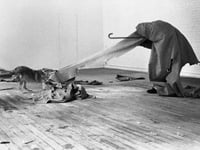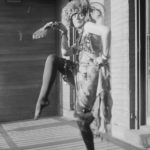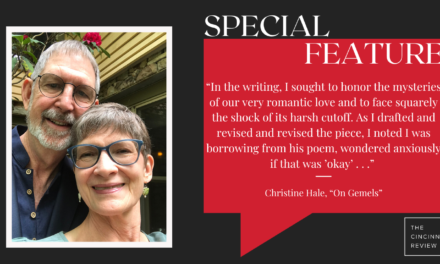In our Issue 14.2, we feature a stunning story by Yxta Maya Murray, “YouTube Comment 2 to Video of I Like America and America Likes Me by Joseph Beuys.” When we read and copyedited the story (read an excerpt here), we experienced it almost as a hybrid piece, with such developed descriptions of performance art that it felt like literary nonfiction in parts. We asked Murray to write a primer on performance art for the uninitiated, and she was gracious enough to send us this post.
Yxta Maya Murray: Nothing hurts as bad as performance art. That’s why I love it so much.
Performance art has probably been with us since humans began playacting, but its first modern incarnation might be in 1917, when Baroness Elsa von Freytag-Loringhoven raced around the East Coast wearing live birds and tin-can bras as a “living collage.” Or perhaps the grandmother of performance art was Marchesa Luisa Casati, who swanned around Venice c. 1912 adorned in nothing but tattered furs and two pet cheetahs.
The Baroness and the Marchesa limned female sexuality and desperation with their stagecraft. Their costumes and dramas expressed their intense creativity that spat in the face of their own gendered poverty, and in their actings-out, they helped build a brand new art form.
Lots of people seem to think that the originator of contemporary performance art was Joseph Beuys, though.
Joseph Beuys! This twentieth-century German, liar, con man, father, sculptor, and agent provocateur took a coyote as a roommate in 1974, when he and the beast lived for a week in René Block’s New York gallery. In this action, I Like America and America Likes Me, Beuys played with the coyote by throwing gloves at it, and had his assistants bring in newspapers so the coyote would have a clean place to pee. Beuys also danced around and engaged in mystical, maybe racist, rituals inspired by the musings of white supremacist Rudolf Steiner, while explaining that he was helping Native Americans with his Art.
See what I meant about performance art and pain?
Beuys’s excruciating example is not my favorite, though.
I most like performance art that beats me up not with racism but with scary reminders that I had better love my fellow humans as deeply as possible before I die. I find such mementos mori in the work of world-famous performance artist Marina Abramović. Her Rhythm 5, for example, involved her setting a pentagram on fire and nearly dying, and her Lips of Thomas saw her self-harming and drinking a liter of honey and another one of wine before passing out on a block of ice.
I think she does it so that we don’t have to.
If you’d like an introduction to current performance artists who really feel the burn, spare some time for Molly Jo Shea, who in 2015 enacted Taking Stock In Yourself:
In this piece, Shea instructed audience members to read out affirmations like “I can positively take responsibility for my own actions” before throwing tomatoes at her head. It’s a performance art equivalent of the Stanford Prison Experiment, which demonstrated to the world that people will obey all kinds of horrible orders.
And then there’s Vaginal Davis, who now lives in Germany but got her start in Los Angeles back in the 1980’s. Last summer at the Broad museum, I saw this genderqueer artist engage an exciting moral vivisection of Nico, the 1960’s pop superstar and Warhol icon. Something like the Baroness and the Marchesa, Davis paraded around in a glitzy dress, her eyes flashing Cleopatra eye makeup. But instead of pointing to economic poverty, Davis’s work detailed a different kind of deficiency: She gave the audience a lecture on how the glamorous ’60s were built on an illusion of freedom and beauty that disguised ancient and exhausting habits of racial oppression.
“Hate is an exciting emotion,” she said.
Interested in learning even more about performance art? Here is an incomplete list to help you in your studies:
Vito Acconci’s Seedbed (1972).
Jill Miller, The Milk Truck (ongoing).
Mierle Laderman Ukeles’s Maintenance Art show at the Queens Museum in 2017.
Sanja Iveković, Triangle (1979).
Rafa Esparza, Red Summer (2016).





![Katie Berta on Her Poem “[To be a child again.]”](https://www.cincinnatireview.com/wp-content/uploads/2022/12/Berta-house-440x264.jpg)






